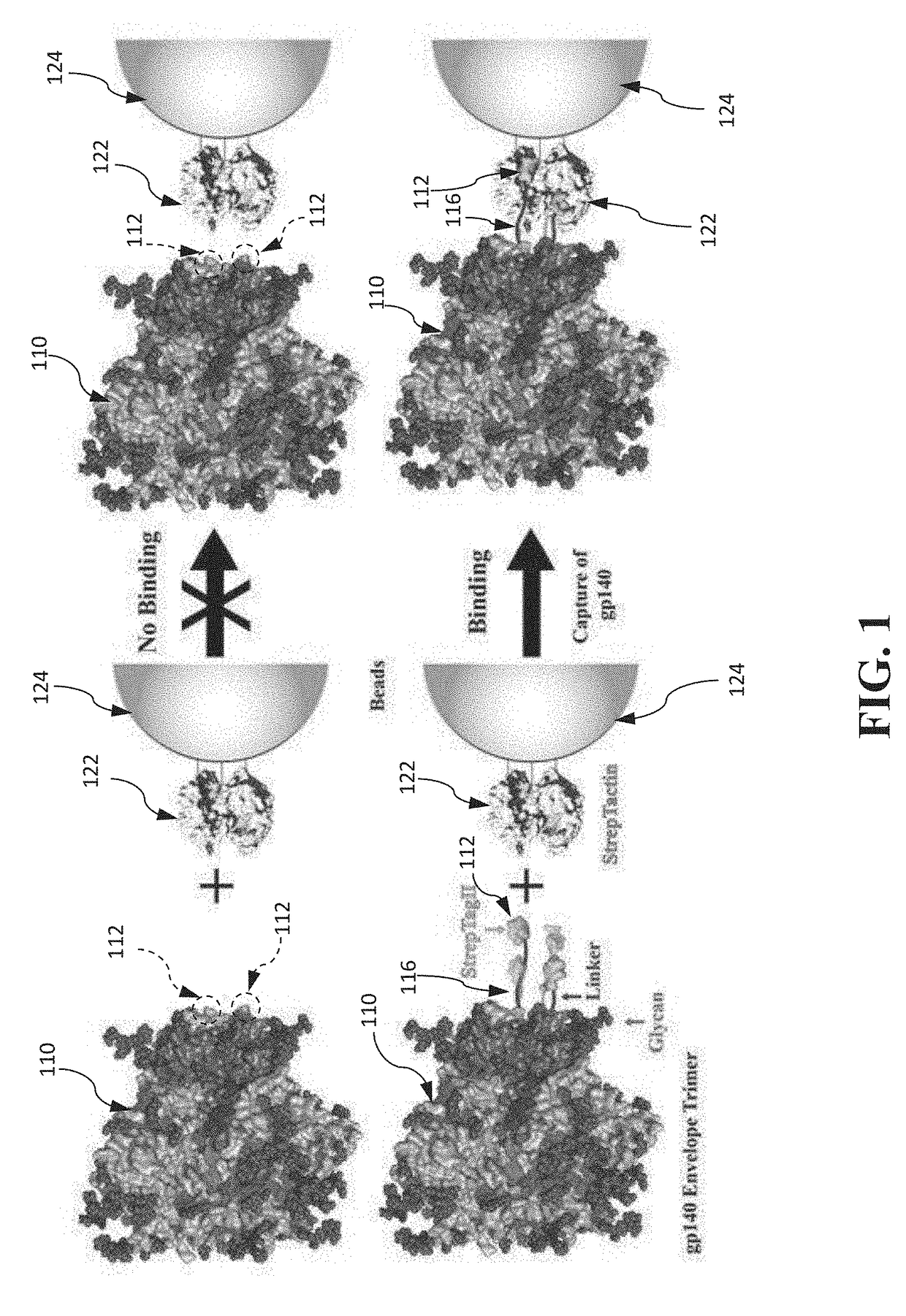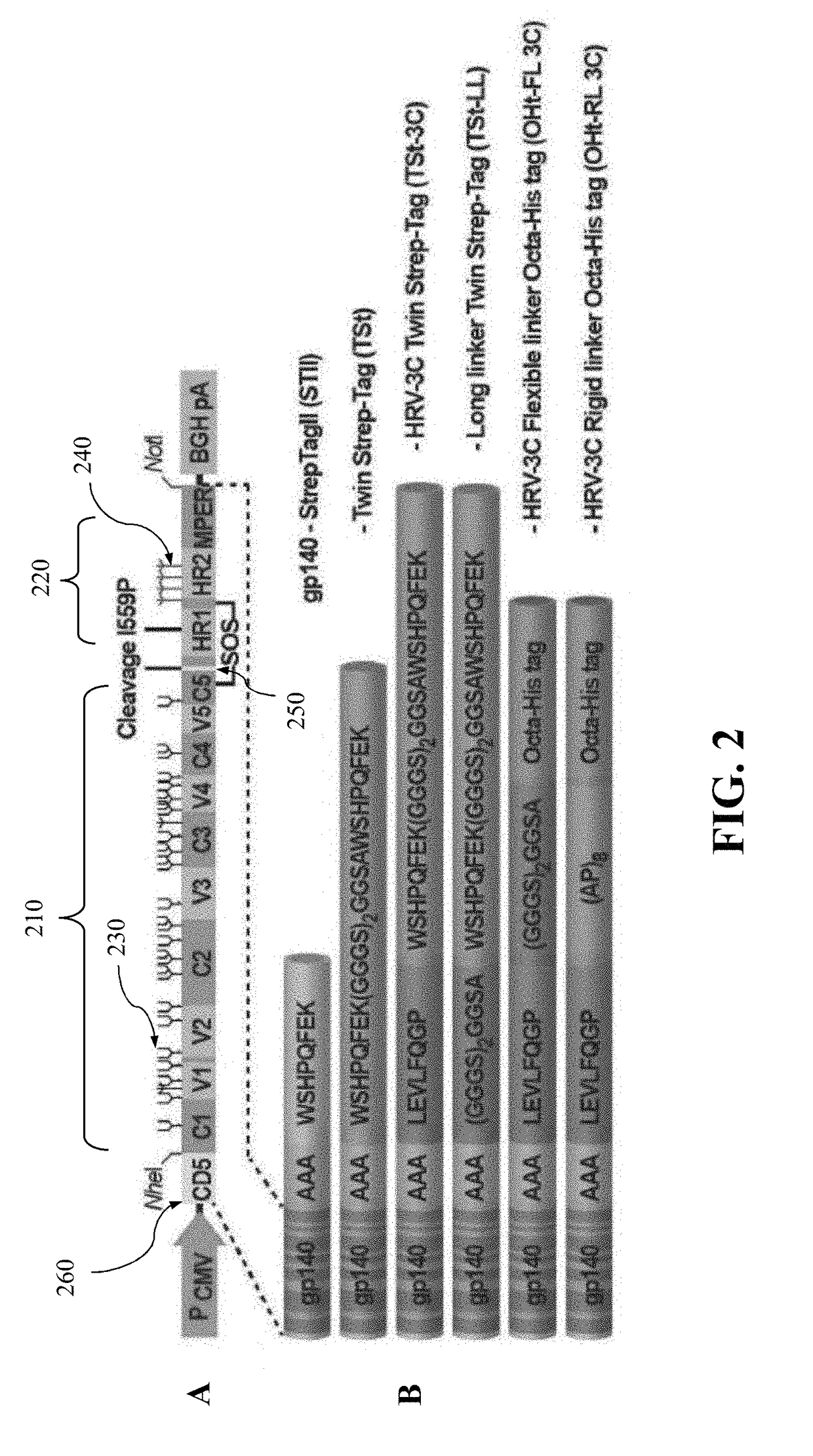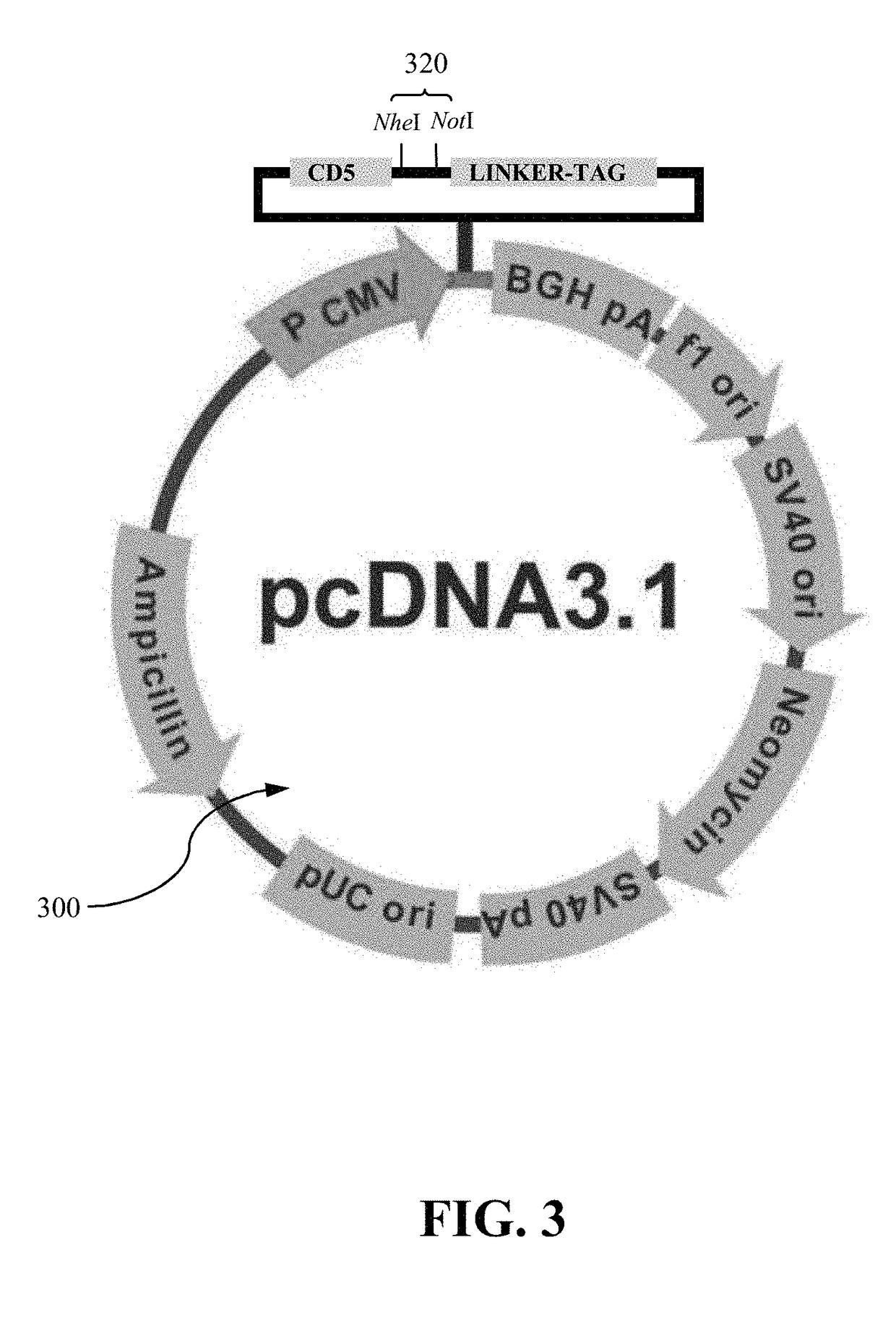Authentic trimeric HIV-1 GP140 envelope glycoproteins comprising a long linker and tag
a technology of hiv-1 and glycoprotein, which is applied in the field of authentic trimeric hiv-1 gp140 envelope glycoprotein and hiv-1 envelope trimers, can solve the problems of inability to produce authentic hiv-1 trimers, difficulty in preparation of authentic hiv-1 trimers, and inability to establish hiv infection in the human hos
- Summary
- Abstract
- Description
- Claims
- Application Information
AI Technical Summary
Benefits of technology
Problems solved by technology
Method used
Image
Examples
example 1
Experimental Procedures
Antibodies
[0202]The following reagents are obtained through the NIH AIDS Reagent Program, Division of AIDS, NIAID, HIV-1 gp120 Monoclonal Antibody (2G 12)36, 37, 38, 39, 40 from Dr. Hermann Katinger, HIV-1 gp120 MAb (VRC01)17 from Dr. John Mascola, PGT 121 (Cat#12343),41 HIV-1 gp41 Monoclonal Antibody (F240)42 and HIV-1 gp120 Monoclonal Antibody (F105)43, 44, 45, 46 from Dr. Marshall Posner and Dr. Lisa Cavacini. The PG9,19 PG16,19 PGT145,41 PGT151,47 and b6,16 are obtained from Scripps Research Institute and International AIDS Vaccine Initiative Neutralizing Antibody Center (IAVI NAC). Polyclonal Bas against HIV-1 JREL gp140 are raised in mice in our laboratory.
Clone Constructions
[0203]The furin-expressing plasmid, Furin: FLAG / pGEM7Zf(+), is obtained from Dr. Gary Thomas (Vollum Institute, Portland, Oreg.). The furin fragment from this plasmid is sub-cloned into pcDNA3.1(−) (Life Technologies) using EcoRI and HindIII restriction sites.
[0204]Codon optimized gp...
example 2
Conventional Strategies have not been Very Effective to Produce HIV-I Env Trimers
[0220]This example shows that a STREP-TAG® II with an extended linker allows rapid purification of HIV-1 gp140 envelope trimers.
[0221]Several codon-optimized gp140 constructs from HIV-1 strains JRFL, SF162 (clade B viruses), and CONPEP (clade C) for production of Env trimers are tested. As an example, FIG. 4 is a schematic image of the JRFL foldon-gp140 recombinant construct showing the positions of the cleavage resistant SEKS mutation (SEQ ID NO: 15), foldon, and His-tag. The gp140 DNA containing gp120 and gp41 ectodomain sequences truncated at aa664 or 683 (HXB2 numbering) is cloned under the control of the CMV promoter (FIG. 4) and transfected into a variety of mammalian cell lines (293F, 293T, 293EXPI, CHO, GNTI−). With a signal peptide fused to the N-terminus, gp140 is secreted into the culture medium and the efficiency of production is quantified. Both cleavage resistant (CR) and cleavage proficie...
example 3
Extended STREP-TAG® II Allows Efficient Isolation of Gp140
[0229]This example illustrates an approach that allows selective capture of gp140 directly from the culture medium and is desirable for the production of trimers. Previous attempts to achieve this by fusing gp140 with a tag such as the His-tag have failed. It is hypothesized that these failures stemmed from the possibility that the tag, when attached to the base of the gp140 structure, is probably occluded, a problem further compounded by the presence of glycan shield, with up to 12 glycans attached to the C-terminal heptad repeat (HR)-2 helices. If the hypothesis is correct, extending the tag away from the base should make it more accessible for binding. This reasoning is supported by an example showing that an insertion of a 27aa foldon sequence comprising SEQ ID NO: 7 between the C-terminus of gp140 and the His-tag allows efficient binding to Ni-agarose.
[0230]A series of 36 recombinant clones are constructed as shown in FI...
PUM
 Login to View More
Login to View More Abstract
Description
Claims
Application Information
 Login to View More
Login to View More - R&D
- Intellectual Property
- Life Sciences
- Materials
- Tech Scout
- Unparalleled Data Quality
- Higher Quality Content
- 60% Fewer Hallucinations
Browse by: Latest US Patents, China's latest patents, Technical Efficacy Thesaurus, Application Domain, Technology Topic, Popular Technical Reports.
© 2025 PatSnap. All rights reserved.Legal|Privacy policy|Modern Slavery Act Transparency Statement|Sitemap|About US| Contact US: help@patsnap.com



